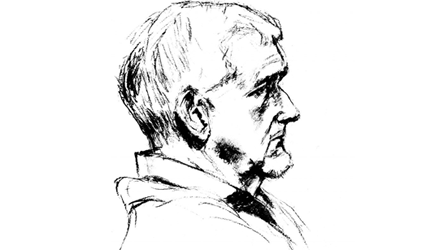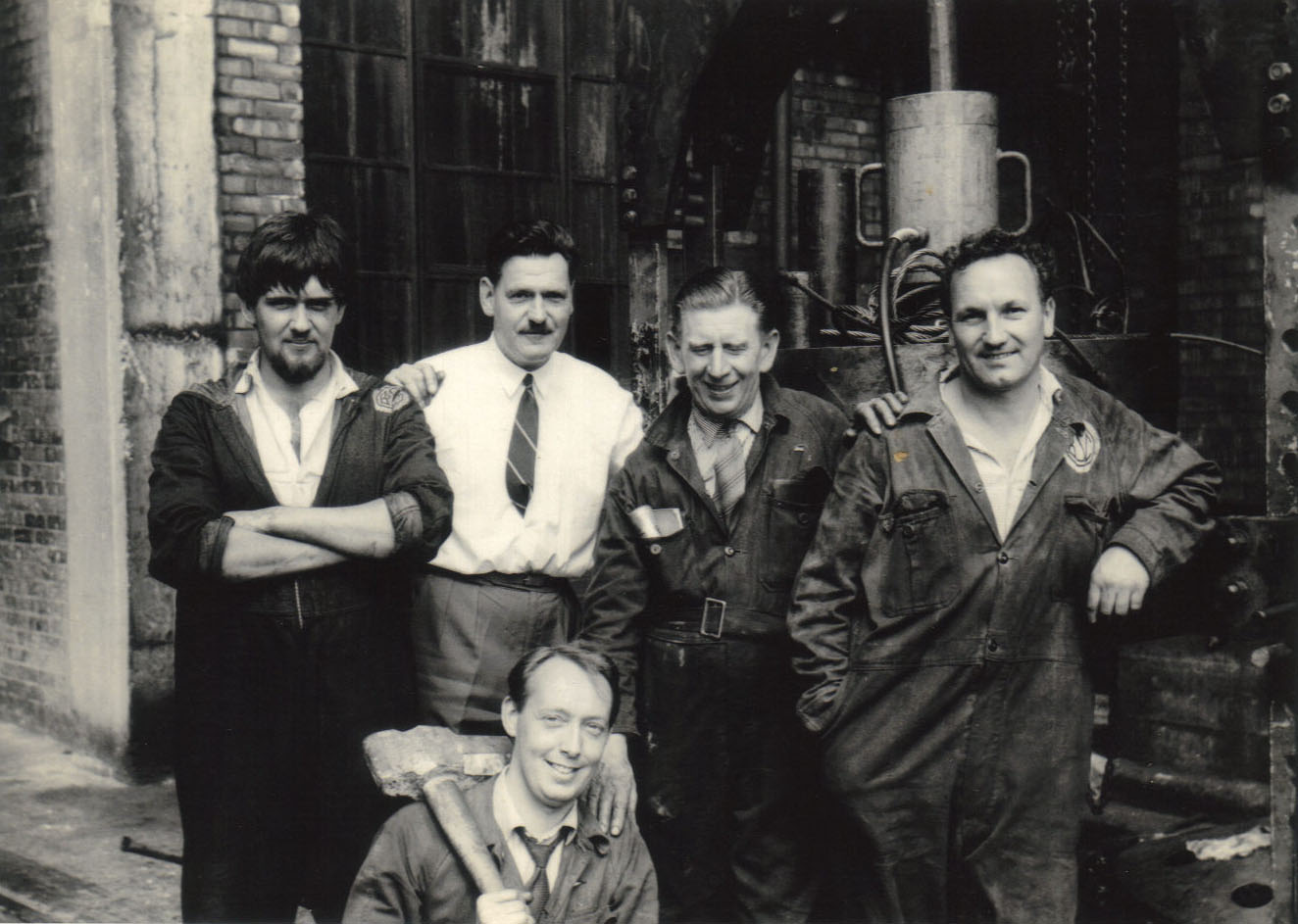
We literally see our dead relatives when we look at their photos
so the philosopher Kendall Walton has suggested.
Photographs are transparent, we see the world through them
and through their form of realism we glance into the past.
Walton philosophises on the nature of photographic realism
but what of time, spatial awareness, interaction?
What indeed of time, forty five years since we looked at the lens,
yet now I look back at myself staring directly at me
with very little sign of assertion at twenty
but a certain element of bravado,
for we are the heavy gang,
three of us have just lifted several tons of gearbox
sixty feet in the air and installed it on the tower diffuser
by a cats cradle of chain blocks, a slow motion trapeze act
that enthralled onlookers with each load transfer.
Looking at me I can sense my elation, we’ve done it!
It was Berts lift, he sited the rigs and slings,
that quiet confidence shows, one hand in pocket.
Robin kneels in front, the 28 pound hammer on his shoulder
a physical pun on what we have just done.
Our greasy stores issued coveralls are critically off set
by Harry Beans’s white shirt, and Johnnie Bullens ironed overalls,
both keen to slide into the aura of the moment but nowhere seen
throughout the long ratchet of the block and tackle lift.
Each transfer gauged to the inch, around, through,
and above the machinery on all four floors.
This was spatial awareness of an intensity
that philosophers can only guess at.
I can still see that interaction in the photograph
and the dependence of the three that used it.
A warmth of camaraderie generates from the image in my hand
and intense feeling of the moment floods back
to the last one left to feel it.
This poem has appeared on the web magazine Open Writing, which features a variety of writing. Click on the sites highlighted title to visit it.
Christina Van Melzen read ‘Dead Images’ in September 2009, and was stimulated to write ‘Lasting Images’.
Images last as long as paper contains and holds them.
The stories they tell outlast the protagonists.
We are led from the image to remember
how it was and never should be again.
Long dead those rows of men, gas-blinded,
hands on the shoulder of the man in front,
those match-stick survivors of death camps,
those unarmed students before the rolling tanks.
Interpretation here inviolable.
Closer to the hearth other pictures come to mind;
the drowned grandfather whom I never knew,
rotund and prosperous, moustachioed,
with a bowler hat and laughter in his eyes.
The aunt I did, but tightly permed and pinafored,
dispensing stewed plums and custard.
Never smiling. Yet here she is, shyly seductive,
all fashionable fringed and bobbed.
Such homely images are often lost. Auntie who?
Soon no-one will remember the stewed plums
and the pinanfore, but the youthful smile lives on,
caring not who sees or what stories they concoct.
Such is the perverse power of pictures held on paper.


Christina.
I have only recorded the most recent poems on the site. Those you can listen to have a play button under the poems intoduction, with the words CLICK ON THE ABOVE TAB TO HEAR THE POEM. So if you were looking for that on Dead Images, it did not exist, but I have now recorded the poem and added the play button for you.
Dear Ivor
Be a darling and correct the typo in Dead Images, my aunt served ‘plums’ .
I’m a bit thick with pcs and can’t manage to listen to your readings – what am I doing wrong?
Christina